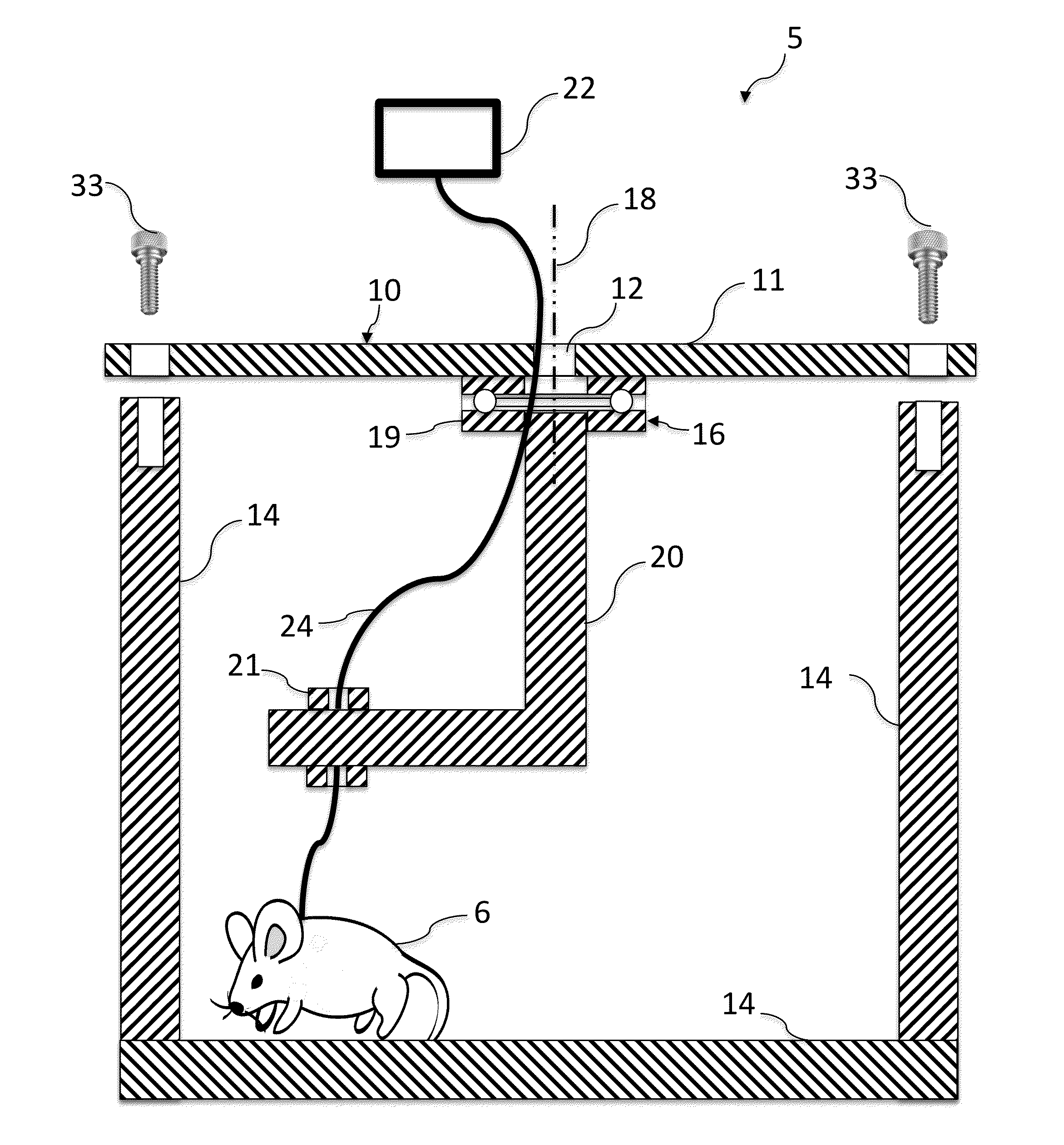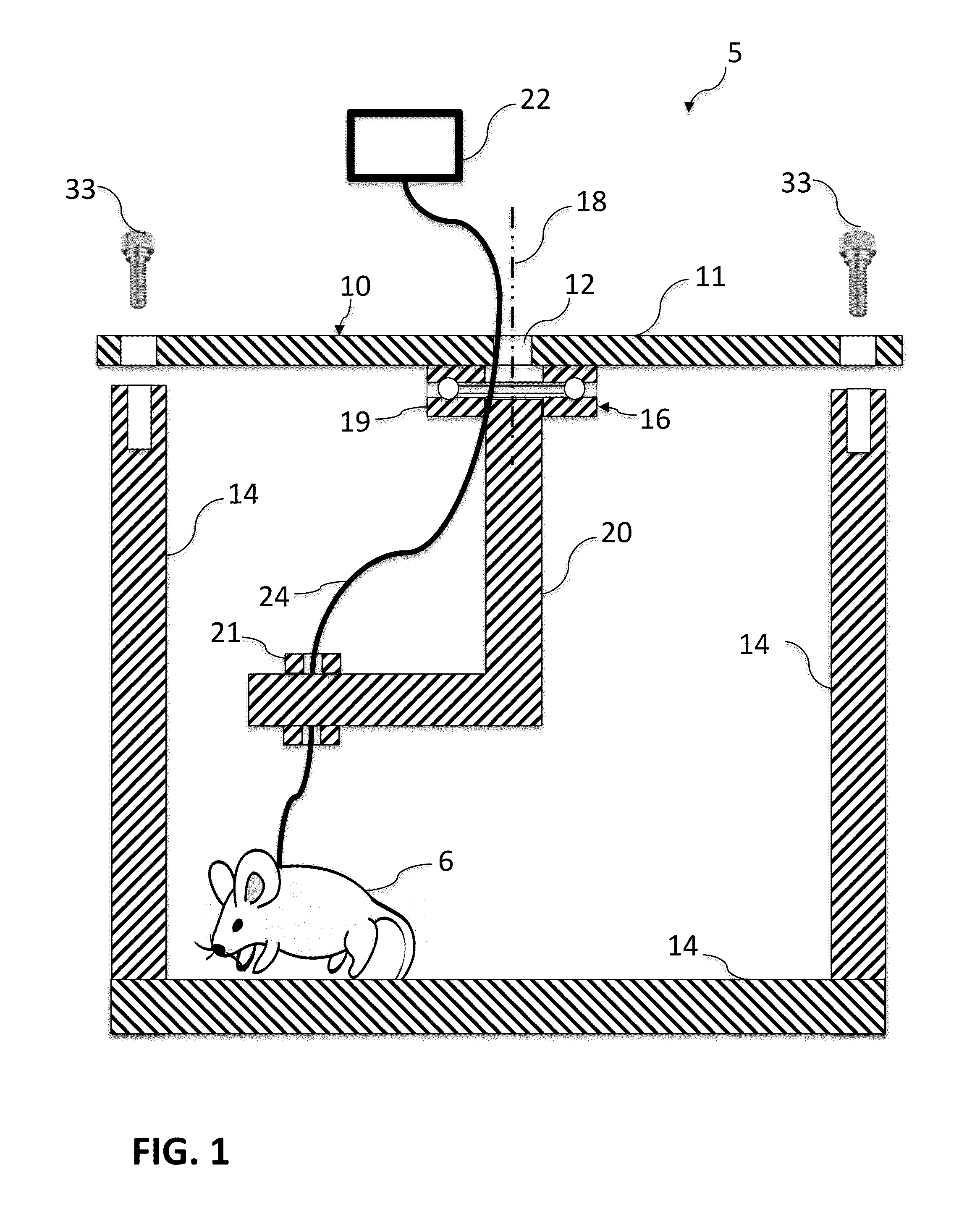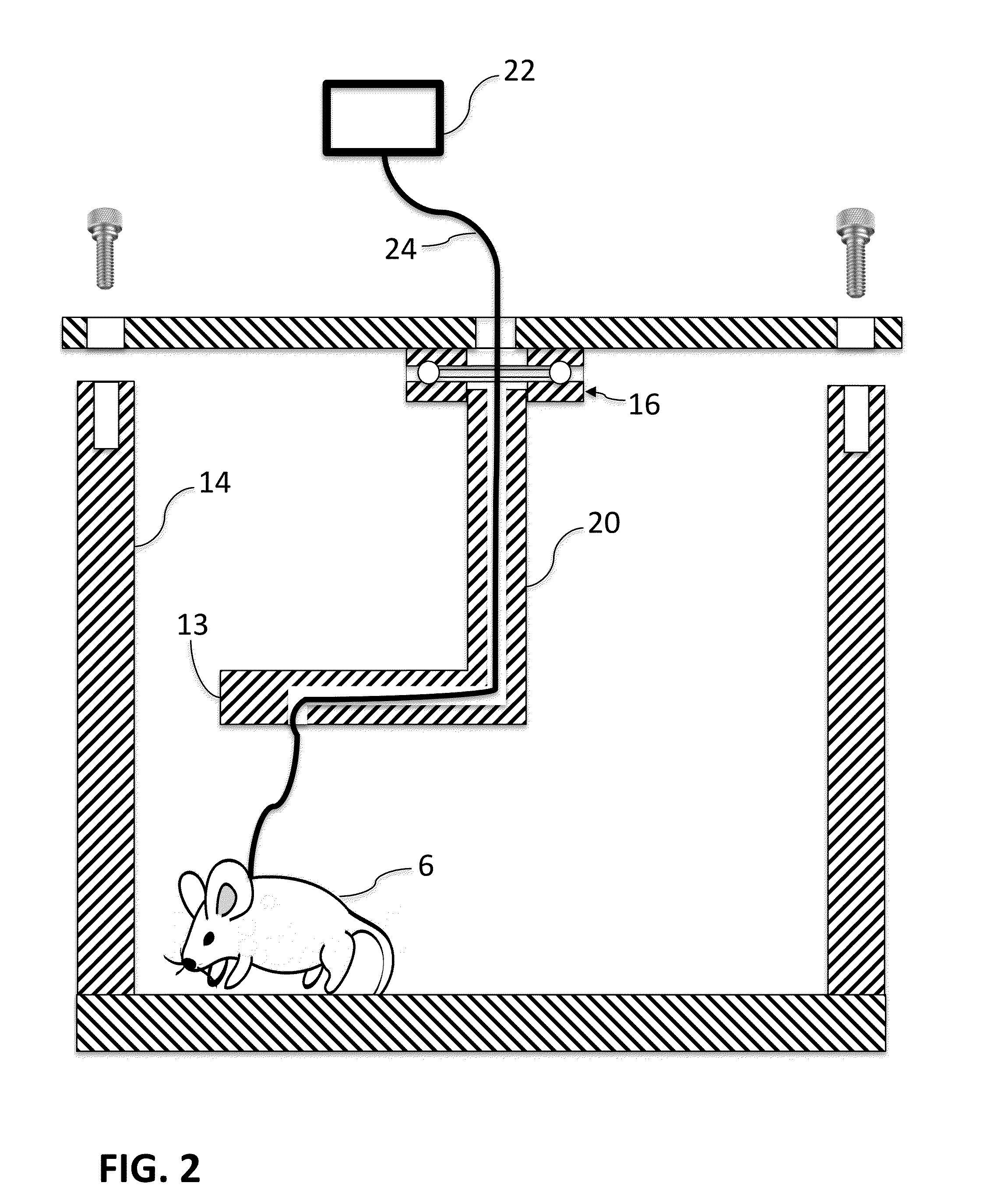System for providing an interface for interacting with a laboratory animal
a laboratory animal and interface technology, applied in the field of conducting animal research, can solve the problems of restricting the movement of the animal, heavy tethers for a small animal, and difficult fluid swivels
- Summary
- Abstract
- Description
- Claims
- Application Information
AI Technical Summary
Benefits of technology
Problems solved by technology
Method used
Image
Examples
Embodiment Construction
[0015]According to one embodiment of the present invention, a system for providing an interface for interacting with a laboratory animal is disclosed. The system features a support member having a body and an opening in the body, the support member configured to attach to an animal cage, a first rotating member attached to the support member, the first rotating member having a first rotation axis and a rotation body concentric with and rotatable around the first rotation axis, an arm attached to the first rotating member and configured to rotate around the first rotation axis, at least one first device for coupling to and interacting with the laboratory animal, and a first cable coupled to the arm, the first cable passing through the first rotating member and the opening in the body of the support member and having a first end and a second end; wherein the first end is coupled to the at least one first device and a second end is configured for attaching to the laboratory animal. The...
PUM
 Login to View More
Login to View More Abstract
Description
Claims
Application Information
 Login to View More
Login to View More - R&D
- Intellectual Property
- Life Sciences
- Materials
- Tech Scout
- Unparalleled Data Quality
- Higher Quality Content
- 60% Fewer Hallucinations
Browse by: Latest US Patents, China's latest patents, Technical Efficacy Thesaurus, Application Domain, Technology Topic, Popular Technical Reports.
© 2025 PatSnap. All rights reserved.Legal|Privacy policy|Modern Slavery Act Transparency Statement|Sitemap|About US| Contact US: help@patsnap.com



